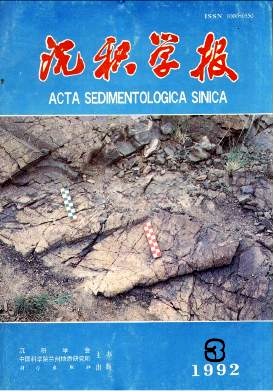Progress of the Phosphorite Research and Its Theory of Biomineralization
- Publish Date: 1992-09-10
Abstract: The research of sedimentary minerals produced in China has achievablely progressed for the recent dec-a.le or the basis of the sedimentary development, especially the phosphorite research has got abrrakthrough progress. The phoshhorite research has made two steps in a decade: the first is from the chem-tcalsedimentary theory to the physical enrichmentary nne and the second is the development of the biomineralization theory. Upper Sinian Epoch to the early period of Lower Cumhri}n Epoch is an unprecedented prosperous per:-od of the phosphorus microorganism and it is also the most important phosphorus mineralization one inChina, and tens of billion tons of phosphorus ore were formed. Many phosphorus microorganisms, suchas agla.and small shell fossils (the latter one is only produced in ore of Lower Cambrian) with variuusshapes have been found in phosphorites of every industrial mineral deposit and they are the main componentsof phosphorite. Among them the phosphorus microorganism is mainly f}ronu bacteria of procarytes to fungusof euearyotes. Up till now, three communities have been found, i.e., bacteria, actinomyces and mould.The author adopted microbiology, biochemistry and medicine to the piiosphorite research and discussed thephosphorite biomineralization, biological enrichment phospl;orus mechanism about tW oxidizingphosphoric acidification and biological calicification as will as expound the phosphorite biological cause onthe basris of the phosphorite petro-biological characteristics. The biological characteristics of the chemicalcomponents and the infrared absorptive spectrum, and the rare-earth element compositions and so on areanalysed, Phosphorite is actually a special biological rock and the phosphate composition ranges fromultramicros 0.05 }m-0.5}m to macroscopic particles front silt to medu}n sand. The phosphorite is consisted of single species bacteria and bacteria groupe, which consists of the same species microorganism and themicroorganism commuwties, which consist of the different species microorganism (including alga) as well as the small fossil shells. The phosphorite petro-types can be subdivided as micro-phosphorite. cumtila,rspharolith. coated granule. algal bacterium granule, strumutolithic, agglumerative. oncolitrsand small shell phosphorite.Organic chemical compound of life organizauon, such as remaining amino acid and nucleic acid etc., are commonly discovered by the analysis of organic chemical cumposition. On the ba sis of analysis of infrared spectrum there are organic pigments,-CH3,-CH2,-C=H2OH and the vibration frequency of phosphorite is similar to one of the bone apatite of dinosauria, tortoiseand so on. The rare-earth elemetn standardization match model of the every phosphorite closesmodel of apatite with the typical biological cause from Palaeozoic Era to modern times.and hyolithto the match Mficroorganism is culsely related to circumstance tii multiplying circumstance condition ofmicroorganism relates internally to tile sedimentary circumstance of phosphorite. There are a lot of physicaland chemical conditions that influence the growing of microorganism, the important faotors aretemperature, Eh, pH and light. These most suitable conditions of.he microorganism breeding and grow-ing are closely related to the conditions of phosphorite forming. T'he 0biological breeding field" of the most suitable phosphorus biological growing and multiplying inocean shows no different from the palaeogeograpitical unit of the phusphorite mineralization. We call the bio-logical breeding field as“the epicontinental subqueous galley wall" which is the most favourableminerogenetic belt of phosphorite. Our research has discovered the two main industrial mineral layea ofDoushantuo period along the epicontinental subqueous galley wall which distribute from the western Hubeito the; middle Gui::hou offer as the regular overlap migration sediment according to the ingression and seacurrent directions. This law may be an universal one, otherwise, the two industrial mineral layers in theeastern Yunnan during Lower Cambrian Epoch offer also as the regular migration seiiiment according to theingression and sea current directions. This law can be used to survey and research for minerals.
| Citation: | Dongye Maixing. Progress of the Phosphorite Research and Its Theory of Biomineralization[J]. Acta Sedimentologica Sinica, 1992, 10(3): 96-103. |






 DownLoad:
DownLoad: